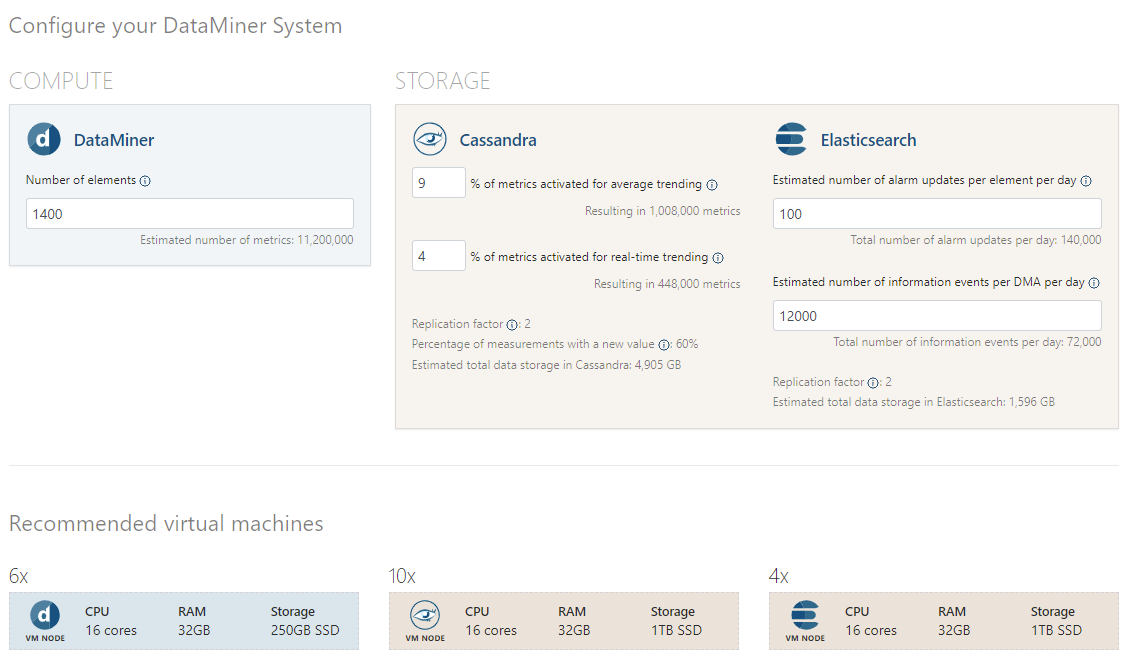Hi all,
We are thinking on implementing Cassandra and Elastic clusters for our current system where we have 4 DMS clusters configured and balanced in the same way.
Taking the info of one of them, and matching with the node calculator it seems that for a 6 DMA system we need 10 Cassandra and 4 Elastic nodes.
Total DMAs 6
Elements 1400
Total metrics for trending 33’476,258
Total AVG 923,930
Total RT 334,249
(The percentages indicated in the node calculator were set to match with an approximate number of parameters we have)
Number of information events per DMA per day 12000
Number of alarm updates per element per day 95
Current DB size of the cluster: 350G (AVG of 58.3 GB per server)

The current DMS configuration is using local Cassandra DB for each DMA and it’s working fine.
Our first approach was to implement 1 Cassandra and 1 Elastic nodes per server but not in cluster, then we thought than implementing a cluster for each one could result in using less servers and not using more.
How accurate can I take the outcome of the node calculator?
Is there any other sizing suggestions?
Thanks in advance.
Christhiam,
Looking at the numbers as presented above, the node calculation seems reliable and it should cover your numbers safely.
The multi-cluster approach is the recommended architecture, and indeed, by implementing the Cassandra and Elastic clusters alongside the DMS, you would be optimizing resources, not just in the number of nodes but also because you will be freeing your existing servers from having to share resources between application (DataMiner) and storage (Cassandra) operations. Event processing is also greatly enhanced by integrating with Elastic.
Please, be sure to review the DataMiner System Architecture hub (https://community.dataminer.services/expert-hubs-dataminer-system-architecture/) for details on the various configurations available and the recommended specs for each tier.
Note that Linux is the preferred OS for the storage tier and starting with Cassandra 4.0, windows will not be supported. What this means is that other than DataMiner, which will remain on Windows, the entire storage tier could run on Linux and you can get some nice savings there as well.